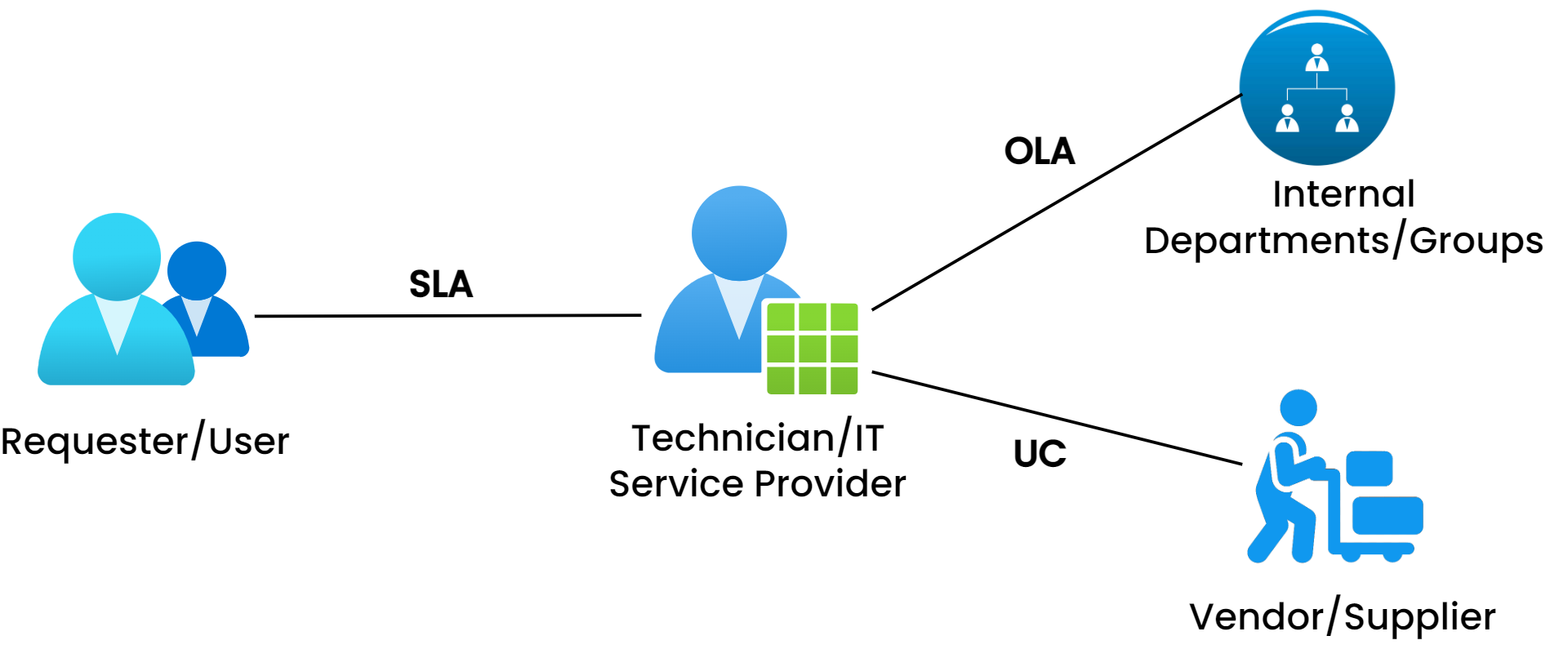Service Level Agreeement
In every industry customers expect that they receive proper and on-time services. And, to guarantee these expectations, agreements are usually signed between the customers and the service providers that describe the expected level of service to be provided.
The types of contracts used are:
- SLA (Service Level Agreement)
- OLA (Operational Level Agreement)
- UC (Underpinning Contract)
SLAs
Service Level Agreements (SLA) define the commitment between Requestors and the IT service provider in an organization. SLAs determine the level of urgency, response time, and the time required for tickets to get resolved, and they also govern the escalation rules when tickets are not resolved or responded within a stipulated time frame. SLAs can be set for a department and a sub-department.
By default we have four SLAs defined out of the box with each having their own rules for resolution and escalation time. The default SLAs are defined for the Request module and are triggered based on the Priority.
- Low Priority
- Medium Priority
- High Priority
- Urgent Priority
How SLA Works?
SLA requires a collaboration of different configuration settings. Based on the configuration, the SLA assigns a ‘Due date’ to the ticket. For example: An SLA is defined for the low priority ticket. Its due date is 7 days. System will see the ticket create date and compute the due date after adding 7 days.
SLA evaluates the working business hours of the technician group. For example: A technician group – ‘support team’ works for 24×7 hours. For a low priority request, the system will compute 7 days by adding all the working hours to give a due date. Hence, if a ticket opens on 1st Jan 2020 at 10:00 AM in the morning, system will show due date as 8th Jan 2020 10:00 AM (6 Days 23 Hours minutes 59 Minutes).
In another scenario, a technician group – ‘IT Team’ works Mon-Fri 10:00 AM – 07:00 PM. Also, they enjoy 1 hour lunch break. For a low priority request, the system will compute 7 days by adding all the working hours (it excludes weekend breaks and lunch break) to give a due date. Hence, if a ticket opens on 1st Jan 2020 at 10:00 AM in the morning, the system will show due date as 10th Jan 2020 06:00 PM (8 Days 23 Hours 59 Minutes). Here, it does not calculate the hours and only computes the number of working days. Hence, the due date is the end of the day and not 10:00 AM in the morning.
When someone fails to resolve the request on time, it results in SLA violation. The system kicks the escalations flow and the actions defined in escalation comes into effect.
OLAs
Operational Level Agreements are contracts between the internal teams to meet the SLA. These are similar to SLAs but contains one more service targets. Moreover, they are signed off before SLAs. For example: the OLA between the Support Team and the Technical Team.
UCs
The Underpinning Contracts (UC) are contracts between the technicians/IT Service Providers and the external vendors.
Difference between SLA, OLA, and UC
